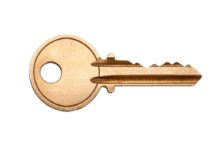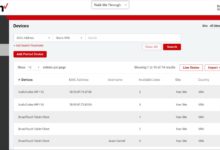B2B Cabinets: 7 Ultimate Power Solutions for Smart Business Growth
When it comes to modern business infrastructure, b2b cabinets are no longer just storage units—they’re strategic assets. From data centers to industrial facilities, these cabinets streamline operations, enhance security, and support scalable growth. Let’s dive into what makes them indispensable in today’s B2B landscape.
What Are B2B Cabinets and Why Do They Matter?

The term b2b cabinets refers to specialized storage and organizational units designed for business-to-business environments. Unlike standard cabinets used in homes or offices, these are engineered for durability, integration, and functionality in industrial, technological, and commercial settings. They serve as the backbone of organized, efficient, and secure operations across various sectors.
Defining B2B Cabinets in Modern Business
B2B cabinets are not limited to physical storage. They encompass server racks, electrical enclosures, medical equipment housings, and modular units used in manufacturing, logistics, and IT infrastructure. These cabinets are designed with precision to meet industry-specific standards such as NEMA, UL, or ISO compliance. Their primary purpose is to protect sensitive equipment, organize complex systems, and ensure operational continuity.
- Engineered for high-traffic, mission-critical environments
- Often customized to fit specific technical or spatial requirements
- Used across industries like telecom, healthcare, energy, and automation
Key Differences Between B2B and Consumer-Grade Cabinets
While consumer cabinets focus on aesthetics and basic utility, b2b cabinets prioritize performance, scalability, and integration. For example, a server cabinet in a data center must support active cooling, cable management, and remote monitoring—features rarely found in retail-grade furniture.
“In B2B environments, a cabinet isn’t just a box—it’s a system enabler.” — Industrial Design Journal, 2023
The Evolution of B2B Cabinets: From Storage to Smart Infrastructure
The role of b2b cabinets has evolved dramatically over the past two decades. Once seen as passive containers, they now function as intelligent nodes within larger operational ecosystems. This transformation has been driven by advances in IoT, edge computing, and modular design principles.
Historical Shift: From Metal Boxes to Integrated Systems
In the early 2000s, most b2b cabinets were simple metal enclosures used to house electrical panels or network switches. Today, they come equipped with sensors, environmental controls, and even AI-driven diagnostics. Companies like Schneider Electric have pioneered smart enclosures that monitor temperature, humidity, and unauthorized access in real time.
- 2000–2010: Focus on physical protection and basic organization
- 2010–2020: Integration of cooling, power distribution, and cable management
- 2020–Present: Adoption of IoT, predictive maintenance, and remote monitoring
Smart Cabinets and the Rise of Edge Computing
With the explosion of edge computing, b2b cabinets are now deployed at the network’s edge—closer to data sources like factories, retail outlets, or cell towers. These edge cabinets house mini-servers, routers, and security gateways, reducing latency and improving response times. According to a Gartner report, over 50% of enterprise data will be processed outside traditional data centers by 2025, making edge-ready cabinets essential.
Top 7 Industries That Rely on B2B Cabinets
The versatility of b2b cabinets makes them critical across multiple high-stakes industries. Each sector leverages these units differently, based on operational demands and regulatory requirements.
1. Data Centers and Cloud Infrastructure
In data centers, b2b cabinets are the foundation of server deployment. They provide structural support, thermal management, and physical security for racks of servers and networking gear. Modern data cabinets often include features like:
- Hot/cold aisle containment systems
- Integrated PDUs (Power Distribution Units)
- Lockable doors with biometric access control
- Cable routing trays and airflow optimization
Brands like APC by Schneider Electric dominate this space, offering scalable cabinet solutions for hyperscale and enterprise environments.
2. Telecommunications and 5G Networks
As 5G infrastructure rolls out globally, telecom operators are deploying thousands of outdoor and indoor b2b cabinets to house radio units, fiber termination points, and power systems. These cabinets must withstand extreme weather, resist vandalism, and support rapid deployment.
“The 5G rollout is creating unprecedented demand for ruggedized, modular b2b cabinets.” — Telecom Infrastructure Review, 2024
Key features include:
- IP65-rated enclosures for dust and water resistance
- Solar-compatible power options
- Remote monitoring via cellular or LoRaWAN
- Quick-deploy mounting systems for poles and walls
3. Healthcare and Medical Equipment
Hospitals and clinics use b2b cabinets to store and protect sensitive diagnostic tools, imaging systems, and patient data servers. In MRI rooms, for instance, cabinets must be non-magnetic and EMI-shielded to prevent interference.
- Antimicrobial coatings for infection control
- Temperature-controlled enclosures for lab equipment
- Compliance with HIPAA and FDA regulations
- Modular designs for mobile medical units
4. Manufacturing and Industrial Automation
On factory floors, b2b cabinets house PLCs (Programmable Logic Controllers), motor drives, and safety relays. These enclosures are built to endure vibrations, dust, oil, and high temperatures. NEMA 4X-rated cabinets are common in food processing and chemical plants due to their corrosion resistance.
Integration with SCADA systems allows operators to monitor cabinet status from central control rooms, reducing downtime and improving safety.
5. Energy and Renewable Power Systems
Solar farms, wind turbines, and substations rely on b2b cabinets for housing inverters, battery management systems, and grid-tie equipment. These cabinets are often deployed in remote, harsh environments, requiring:
- Lightning protection and surge suppression
- Thermal regulation without active cooling
- Lockable access for utility personnel
- Compatibility with SCADA and remote diagnostics
Companies like ABB and Siemens offer specialized enclosures for renewable energy applications.
6. Retail and Smart Vending Solutions
Even in retail, b2b cabinets play a growing role. Smart vending machines, kiosks, and POS backend units are essentially specialized cabinets with integrated computing, payment processing, and inventory tracking.
- Anti-theft designs with tamper alerts
- Climate control for perishable goods
- Remote inventory monitoring via IoT
- Modular interiors for product rotation
7. Transportation and Smart Cities
From traffic control boxes to EV charging stations, b2b cabinets are embedded in urban infrastructure. These units must be vandal-resistant, weatherproof, and easy to service.
For example, smart traffic cabinets now integrate AI-powered cameras, signal controllers, and communication modules—all within a single NEMA-rated enclosure.
Key Features That Define High-Performance B2B Cabinets
Not all b2b cabinets are created equal. The best ones share a set of core features that ensure reliability, scalability, and ease of integration.
Durability and Material Quality
High-performance cabinets are typically constructed from steel, stainless steel, or reinforced composites. The material choice depends on the environment:
- Carbon steel: Cost-effective, suitable for indoor use
- Stainless steel: Corrosion-resistant, ideal for outdoor or chemical environments
- Polycarbonate blends: Lightweight, non-conductive, used in electrical applications
Finish options like powder coating or galvanization enhance longevity and aesthetics.
Thermal Management and Ventilation
Overheating is a leading cause of equipment failure. Advanced b2b cabinets include passive and active cooling solutions:
- Ventilation grills with dust filters
- Fan-assisted airflow systems
- Thermoelectric coolers for sealed enclosures
- Integration with building HVAC systems
Some models use AI-driven thermal sensors to adjust cooling dynamically based on load and ambient conditions.
Security and Access Control
Given the sensitive nature of the equipment they house, security is paramount. Modern b2b cabinets offer:
- Lockable handles with key or combination access
- Biometric scanners for high-security zones
- Alarm systems for unauthorized access attempts
- Integration with enterprise security platforms (e.g., CCTV, access logs)
For remote sites, cellular-enabled cabinets can send real-time alerts to facility managers.
Customization and Modular Design in B2B Cabinets
One size does not fit all in the world of b2b cabinets. Businesses increasingly demand customized solutions tailored to their unique workflows, spatial constraints, and technical requirements.
Why Customization Matters
Off-the-shelf cabinets may not accommodate specialized equipment or fit into tight spaces. Custom b2b cabinets allow businesses to:
- Optimize space utilization in crowded data centers
- Integrate proprietary hardware or legacy systems
- Meet strict regulatory or safety standards
- Brand the enclosure with company logos or color schemes
For example, a pharmaceutical lab might require a cabinet with HEPA filtration and chemical-resistant lining—features not found in standard models.
Modularity: The Future of B2B Cabinet Design
Modular b2b cabinets are designed with interchangeable components, allowing for easy upgrades and reconfiguration. This approach supports scalability and reduces long-term costs.
- Slide-in trays for servers or power supplies
- Plug-and-play cable management systems
- Stackable units for vertical expansion
- Standardized mounting rails (e.g., 19-inch rack)
Modularity also simplifies maintenance—technicians can replace a single module without shutting down the entire system.
How to Choose the Right B2B Cabinets for Your Business
Selecting the right b2b cabinets requires a strategic approach. It’s not just about size or price—it’s about alignment with your operational goals and technical ecosystem.
Assess Your Environmental and Operational Needs
Start by evaluating where the cabinet will be deployed:
- Indoor vs. outdoor? Consider IP ratings and thermal needs.
- High-vibration environment? Look for shock-absorbing mounts.
- Humid or corrosive setting? Opt for stainless steel or coated finishes.
- Remote location? Prioritize remote monitoring and low maintenance.
Evaluate Integration Capabilities
The cabinet should seamlessly integrate with your existing systems:
- Does it support your server rack size (e.g., 19-inch standard)?
- Can it accommodate your power and cooling infrastructure?
- Is it compatible with your network management software?
- Does it allow for future expansion (modular design)?
Consider Total Cost of Ownership (TCO)
While upfront cost is important, TCO includes maintenance, energy use, downtime risk, and scalability. A slightly more expensive cabinet with better cooling and monitoring may save thousands in avoided outages.
“The cheapest cabinet is often the most expensive in the long run.” — Facility Management Today
Top Suppliers and Brands in the B2B Cabinets Market
The global market for b2b cabinets is highly competitive, with several key players offering innovative solutions. Here are some of the most trusted brands:
Schneider Electric
A global leader in energy management, Schneider offers a wide range of b2b cabinets for data centers, industrial automation, and building systems. Their NetShelter series is widely used in enterprise IT environments.
Website: https://www.schneider-electric.com
ABB
ABB specializes in electrification and automation products, including ruggedized enclosures for power, process, and transportation industries. Their cabinets are known for durability and smart integration.
Website: https://www.abb.com
Rittal
A German engineering powerhouse, Rittal is renowned for its precision-manufactured server racks, climate control systems, and modular enclosures. Their TS 8 platform is a benchmark in industrial cabinet design.
Website: https://www.rittal.com
Siemens
Siemens offers a comprehensive portfolio of b2b cabinets for automation, energy, and digital infrastructure. Their focus on Industry 4.0 makes their cabinets ideal for smart factories.
Website: https://www.siemens.com
APC by Schneider Electric
APC is synonymous with reliable IT infrastructure. Their b2b cabinets are optimized for network closets, server rooms, and edge computing deployments.
Website: https://www.apc.com
Future Trends Shaping the B2B Cabinets Industry
The future of b2b cabinets is being shaped by digital transformation, sustainability demands, and evolving business models. Here are the key trends to watch:
AI-Powered Cabinet Management
Artificial intelligence is being embedded into cabinet systems to predict failures, optimize cooling, and automate maintenance schedules. For example, AI can analyze temperature patterns and recommend airflow adjustments before overheating occurs.
- Predictive maintenance alerts
- Energy consumption optimization
- Automated inventory tracking for spare parts
Sustainability and Eco-Friendly Materials
As businesses commit to net-zero goals, manufacturers are shifting to recyclable materials, low-carbon production, and energy-efficient designs. Some b2b cabinets now use up to 70% recycled steel and are fully recyclable at end-of-life.
Green certifications like ENERGY STAR and EPEAT are becoming differentiators in procurement decisions.
Edge-as-a-Service and Cabinet-as-a-Platform
A new business model is emerging: Cabinet-as-a-Service. Instead of buying cabinets outright, companies lease them as part of a managed infrastructure solution. Providers handle installation, monitoring, and upgrades—offering a plug-and-play experience.
This model is gaining traction in telecom, retail, and smart city projects where rapid deployment is critical.
Common Challenges and How to Overcome Them
Despite their benefits, deploying b2b cabinets comes with challenges. Understanding these pitfalls can help businesses make better decisions.
Space Constraints in Urban Deployments
In dense urban areas, finding space for cabinets—especially for 5G or edge computing—can be difficult. Solutions include:
- Wall-mounted or pole-mounted cabinets
- Underground enclosures
- Multi-functional cabinets (e.g., housing both power and data gear)
Cybersecurity Risks in Connected Cabinets
As cabinets become smarter, they also become potential entry points for cyberattacks. A compromised cabinet could allow access to network systems or enable physical sabotage.
Mitigation strategies:
- Regular firmware updates
- Network segmentation
- Encryption of communication channels
- Physical security audits
Supply Chain and Lead Time Delays
Global supply chain disruptions have affected the availability of raw materials and components. Businesses should:
- Work with suppliers offering local manufacturing
- Plan procurement cycles in advance
- Consider modular designs that allow phased deployment
What are b2b cabinets used for?
B2B cabinets are used to house, protect, and organize critical equipment in business environments. Common applications include server storage in data centers, housing telecom gear, protecting industrial control systems, and supporting medical or energy infrastructure. They ensure security, environmental control, and operational efficiency.
What materials are best for b2b cabinets?
The best materials depend on the environment. Carbon steel is cost-effective for indoor use, stainless steel resists corrosion for outdoor or harsh settings, and polycarbonate composites offer lightweight, non-conductive options for electrical applications. Powder coating or galvanization enhances durability.
How do smart b2b cabinets work?
Smart b2b cabinets integrate sensors, IoT connectivity, and software to monitor temperature, humidity, access, and power usage. They can send alerts, optimize cooling, and integrate with enterprise management systems for remote control and predictive maintenance.
Can b2b cabinets be customized?
Yes, most b2b cabinets can be customized for size, material, color, internal layout, and integration with specific hardware. Customization ensures optimal fit for unique operational needs, regulatory compliance, and branding requirements.
Which brands make the best b2b cabinets?
Top brands include Schneider Electric, ABB, Rittal, Siemens, and APC. These companies offer high-quality, reliable cabinets with advanced features for data centers, industrial automation, energy, and telecom applications.
From humble beginnings as simple metal enclosures, b2b cabinets have evolved into intelligent, mission-critical components of modern business infrastructure. Whether protecting servers in a data center or enabling 5G connectivity on city streets, these cabinets are essential for operational resilience and innovation. As technology advances, so too will the capabilities of b2b cabinets—driven by AI, sustainability, and modular design. For businesses looking to future-proof their operations, investing in the right b2b cabinet solution isn’t just smart—it’s strategic.
Further Reading:






